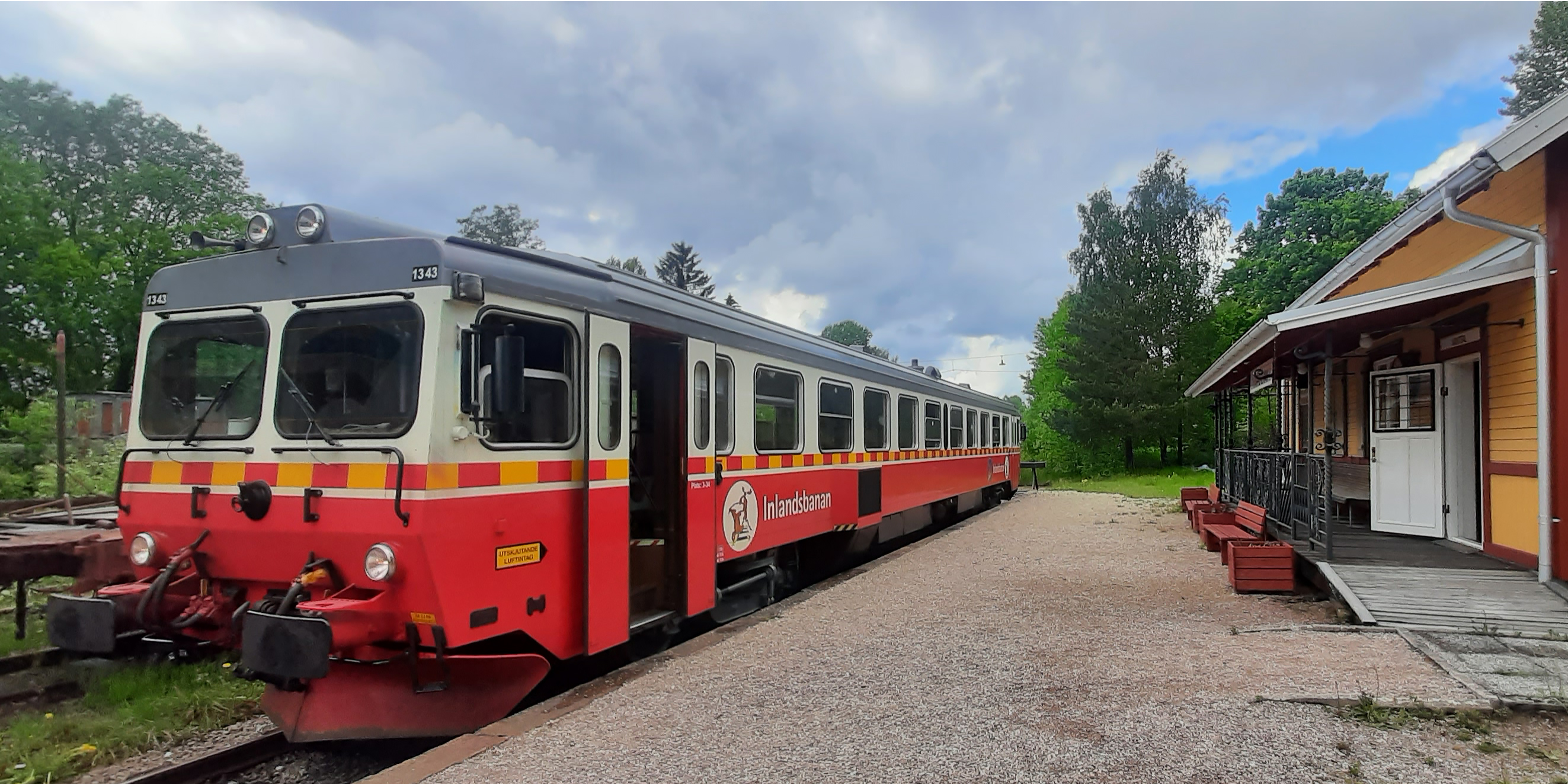
Railcar Y1 1343
In the mid-1970s, SJ's old Y6–Y8 railcars were wearing out and SJ was looking for new ones.
They then bought a new type of railcar from FIAT Ferroviaria and gave it the designation Y1. The first was delivered in 1979, and 100 were ordered (1267–1366).
For employment policy reasons, 30 of these were built by Kalmar Verkstad (nos. 1337–1366). 12 of the railcars (1325–1336) were given a larger baggage space than the others and were given the designation YF1.
When the first railcars arrived, they were thought to be too cramped. So, the number of seats was reduced from 76 to 68. At 45 tonnes, the railcars were larger and heavier than the 20 tonnes of the Y6 generation, and they were equipped with real buffers and screw couplers.
Y1 travelled fine on the rails, but they were considered rather weak with their FIAT engines. Over the years, most railcars were rebuilt with new interiors and with Volvo engines and new gearboxes.
Y1 was originally painted red, but most were painted in the colours of the county transport operators. Over the years, Y1 has been phased out in favour of newer trains. Nowadays, several railcars can still be found in Croatia, Serbia and Uruguay, but Y1 still runs on the Inland Line (Inlandsbanan) during the summer.
Y1 1343 is the last one left in Sweden that has its original interior and FIAT engines. The railcar ended its days in service on the Inland Line and still has its paintwork from that time.
Back then, it was either a railbus or a railcar. In the past, the difference was that a railbus had its own type of coupling and was of a lighter type, but a railcar was a heavier vehicle with buffers and screw couplings.
The word railbus disappeared from SJ’s regulations in the 60s, and after that they were only called railcars, regardless of the coupling. So Y1 1343 is not a railbus, it is actually a railcar.
Explanation
Y1 is a designation (class) of the locomotive type and means:
- Y= Diesel-powered motor vehicle
- 1 = Type 1 within the Y family
- 1343 is the locomotive's individual number
Manufactured
Kalmar Verkstad, 1980
Length
24.4 metres
Weight
45 tonnes
Seats
68
Engine power
2x160 kw=320 kw
Maximum permitted speed
130 km/h